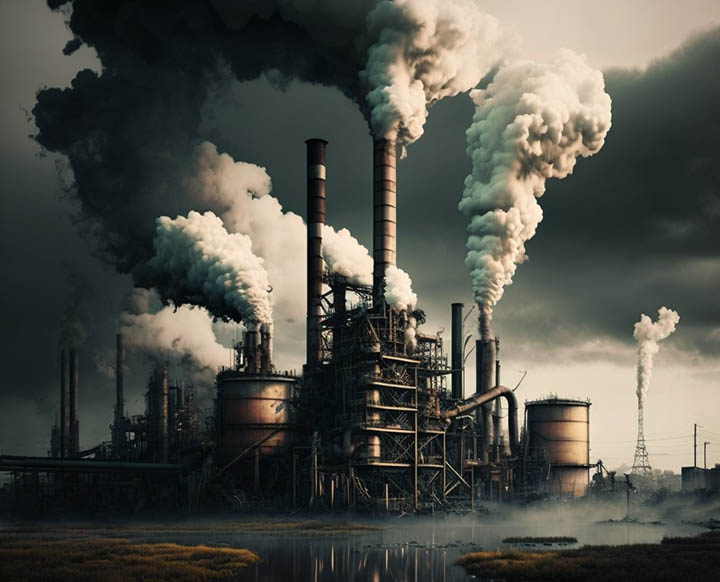The Earth’s atmosphere protects the surface of our planet. It is what makes the existence of life possible.
Composition
Nitrogen makes up the majority (78%) of Earth’s atmosphere. Oxygen is the second most abundant gas, constituting 21% of the atmosphere. The remaining 1% is composed of trace gases such as argon, carbon dioxide, neon, and others.
Layers
The atmosphere is divided into five main layers, each with its own unique characteristics.
The layer closest to the Earth’s surface is the troposphere, which is where weather occurs. The stratosphere, located above the troposphere, contains the ozone layer that protects the Earth from harmful UV radiation. The mesosphere and thermosphere are located above the stratosphere, followed by the exosphere, which is the outermost layer of the atmosphere.
Earth’s Atmosphere And Magnetosphere
Earth’s magnetic field, known as the magnetosphere, helps to protect the planet from harmful particles from the Sun. This magnetic field acts as a shield, deflecting charged particles that could otherwise damage the atmosphere and disrupt communications and navigation systems.

Greenhouse Effect
The greenhouse effect is a natural process that helps to regulate the Earth’s temperature by trapping heat in the atmosphere. This process is caused by certain gases, such as carbon dioxide and methane, which trap heat and warm the planet.
Atmospheric Pressure
Earth’s atmosphere exerts pressure on the surface, which decreases with altitude. At sea level, the atmospheric pressure is about 1013 millibars, while at higher altitudes it can drop to as low as 100 millibars.
Formation of Earth’s Atmosphere
The first atmosphere of our planet formed about 4.5 billion years ago, shortly after the planet was formed. Scientists believe that the atmosphere was formed from volcanic outgassing, which released gases into the atmosphere.
Mass of The Earth’s Atmosphere
The mass of Earth’s atmosphere is estimated to be around 5 quadrillions (5 x 10^18) kilograms. This figure is constantly changing due to the exchange of gases between the atmosphere and the Earth’s surface, as well as the loss of atmosphere to space due to processes such as solar wind. Despite its massive size, the atmosphere is actually quite thin compared to the size of the Earth, with the majority of its mass concentrated in the lower layers close to the surface.

Three Atmospheres of Earth
Earth is believed to have had three different atmospheres in its history. These are the Hadean, the Archean, and the Proterozoic atmospheres. Ours is the 4th. Btw, we breathe because of oxygen, but it was the oxygen that caused one of the mass extinctions on Earth.
It Extends 620 Miles Into Space
Earth’s atmosphere extends into space for several hundred miles, but its density rapidly decreases with increasing altitude. The exact extent of Earth’s atmosphere is somewhat difficult to define, as there is no clear boundary at which the atmosphere ends and space begins. However, it is generally considered that Earth’s atmosphere extends up to about 1,000 kilometers (620 miles) above the Earth’s surface, where the density of the air is too low to have a significant effect on satellite orbits.
Meteorite Protection
The atmosphere helps protect us from meteoroids, or small chunks of rock or ice in space, by burning them up before they can reach the surface of the planet. The size of the meteoroids that the atmosphere can effectively protect us from depends on several factors, including their speed, composition, and angle of entry. In general, small meteoroids burn up completely. Larger meteoroids can survive the journey through the atmosphere and impact the surface as meteorites.


